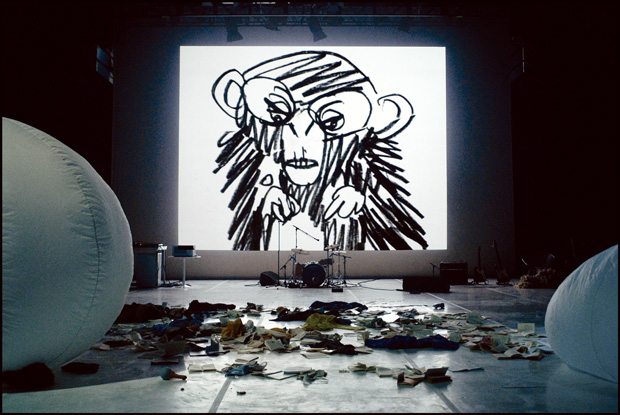by Owen Schaefer
You go to see a performance set in a city square but there are no seats or performers — not even a stage.
The organizers hand new arrivals a set of headphones and as you put them on, a recorded voice issues instructions: “Were you born in Tokyo? Move one step forward. Did you sell something last week? Go left.”
Soon, you are broken into smaller groups, given your roles and told how to play them out. You are the performers, and the play is you.
This is the premise of “Public Domain,” a performance written by Roger Bernat that is part of the lineup for Festival/Tokyo, easily the city’s most cutting-edge theater and performing arts festival. Festival/Tokyo brings together directors, writers and performers from all over the world to present new works and performances that have been creating buzz overseas. The only question is: Are audiences ready?
“Public Domain” (Oct. 30, Every Sat & Sun in Nov. at 3 pm; Ikebukuro Nishiguchi Park) is just one example of what the festival, now in its third run, is calling “Disrobing Theater” — stripping away the expectations of theater and challenging what audiences see, experience and do as an audience; who they expect the actors to be and what form the stage will take. And while there is more standard theatrical fare on stage during the month-long festival, plenty of it will be downright daunting.
“Public Domain” is not the only show to cast the audience as players. “The Complete Manual of Evacuation — Tokyo” is a work written — if one can consider it “written” — by Akira Takayama’s performance group, Port B. The show requires the setting up of “evacuation centers” at each of the Yamanote line’s 29 stations. Audience participation begins with registration over the internet that leads participants to an online chat with a stranger. Again, these are not professional actors but other Tokyoites from a variety of backgrounds, many of them marginalized. If the “audience member” wishes to continue, he or she is given instructions on which of the evacuation centers to go to for a partially scripted face-to-face meeting.
“The Complete Manual of Evacuation — Tokyo” (Oct. 30 – Nov. 28) riffs on the title of Wataru Tsurumi’s controversial book, “The Complete Manual of Suicide,” hinting perhaps that we are approaching a kind of social disaster and that the city needs a method of “evacuation” to other, more community-oriented ways of living.
Equally little remains of traditional performance in Norimizu Ameya’s “The Shape of Me” (Oct. 30 – Nov. 28). Set in an abandoned building, the work is somewhere between installation and performance. The exact details of the location are being kept secret, but audience members will be able to go to the building to view the work. All that is known there will be no stage, no script and no actors — it is clearly going to be up to the audience to decide whether what is left can be considered theater at all.
These are extreme examples, but straightforward productions also promise to be challenging. Dance choreographer Saburo Teshigawara, for example, specializes in tension-filled works that can be physically dangerous and always stunning to watch. Rodrigo Garcia loves to shock and scandalize audiences and will again with a parade of taboos and gut-wrenching images in “Versus” (Nov 20 – 24; Nishi-Sugamo Arts Factory). And the highly-praised “This is How You Will Disappear” (Oct. 30 – Nov. 3; Nishi-Sugamo Arts Factory) is a collaborative effort between director Gisèle Vienne, Shiro Takatani from the Japanese performance collective Dumb Type, fog artist Fujiko Nakaya and musicians Stephen O’Malley and Peter Rehberg, that brings a very real forest onto the stage as an almost living setting for a clash between contemporary archetypes of beauty.
A number of the performances at Festival/Tokyo are in English, including the highly participatory “Public Domain,” and a few Japanese and foreign works will be subtitled in English as well. Add to that the fact that there will be several works to which no words apply, and Festival/Tokyo is highly accessible for anyone willing to witness and even participate in some of the rawest and most undressed performances in theater today.
Event: Festival/Tokyo (Oct. 30 to Nov. 28)
More info: Visit www.festival-tokyo.jp for complete listings of performances, venues, times and ticket information
Tel: (03) 5961-5202









